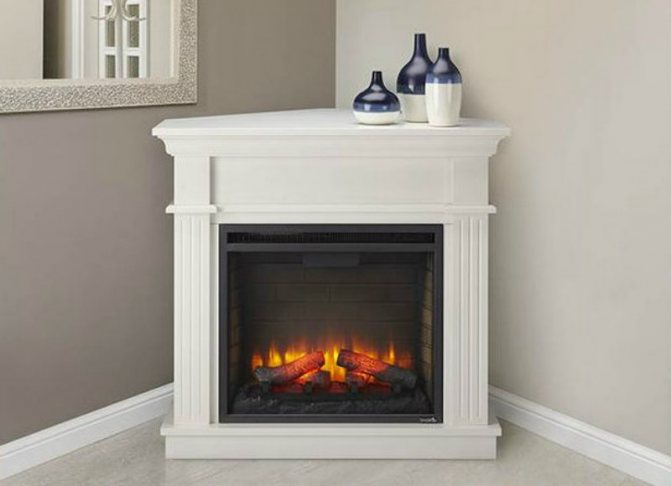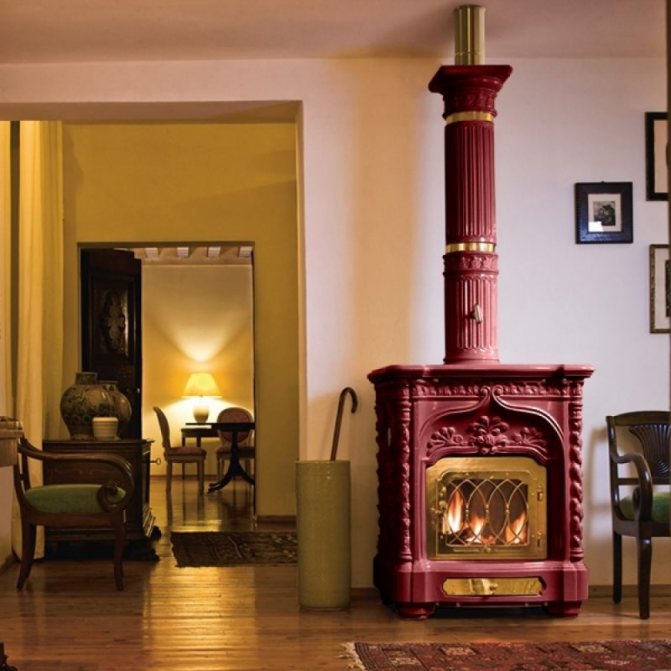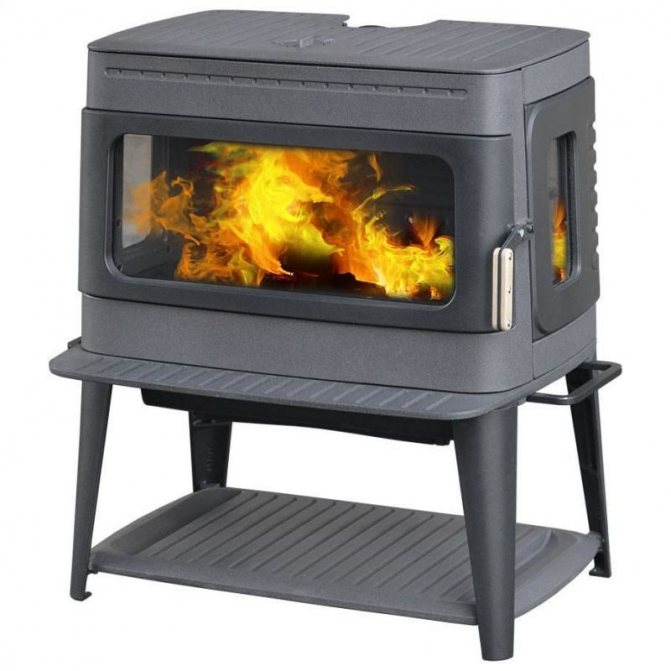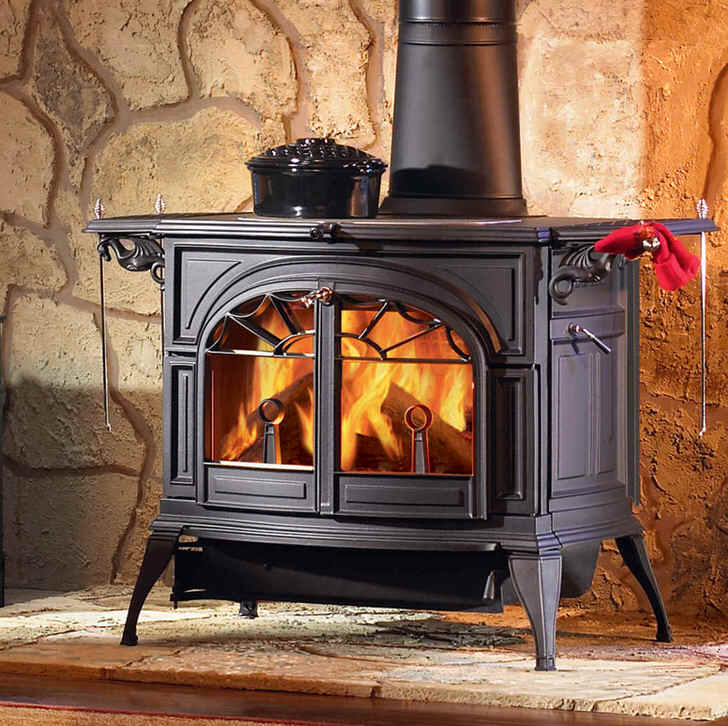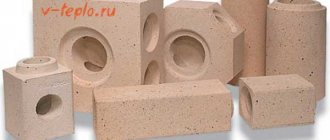In the last article, we got acquainted with the main types of fireplaces and their main elements. In this article, we will get acquainted with the device of a classic wood-burning fireplace and how it works. The article will help you choose between open and closed fireplaces. Once a fireplace was commonplace in European homes, now the fireplace, for the most part, performs a decorative function, but many owners of fireplaces also use them for their intended purpose - heating the room and the house. Indeed, modern fireplaces, unlike their medieval predecessors, have very good efficiency rates. Fireplaces of the so-called "closed type" are especially famous for this, they can be the main heating device in the house, but first things first. Fireplaces, in addition to the location and type of fuel used, are also divided into open and closed ones. In open fireplaces, most of the heat comes directly from an open flame, only a small part of the energy produced in the process of burning wood is consumed without heating the room. the main part of it goes into the chimney. The efficiency of open-type fireplaces does not exceed 15%. Such fireplaces are for the most part a decorative element of the room, but they are capable of delivering aesthetic pleasure from the sight of an open fire. Closed fireplaces produce a completely different effect. Such fireplaces can replace a full-fledged stove. Since in such fireplaces the firebox is covered with fire-resistant glass, most of the heat is transferred to the brick walls of the fireplace, quickly heats them up, and thereby maintains heat in the room for a long time. Moreover, in closed fireplaces, it is possible to install heating equipment that can turn such a fireplace into the center of the heating system of the whole house.
The device of a simple open fireplace
The fireplace can be conditionally divided into several components: 1. Under - the site on which the process of burning firewood directly takes place should be laid out with refractory bricks, at a level above the floor. Such a platform is equipped with a grate, which allows the ash to fall into a special container for ash, and the air to flow to the firewood. 2. Toplivnik - the fuel combustion chamber, in classic brick fireplaces, is made of fireclay bricks that can withstand high temperatures. The shape of the firebox is usually rectangular, but sometimes, for greater heat transfer, it is made in the form of a trapezoid. 3. Smoke collector - place, accumulation of flue gases. In the smoke collector, they are heated and a draft is formed, due to the difference in temperatures between cold air outside and hot air inside. four. Smoke tooth - protrusion between the fuel chamber and the smoke box. The function of the smoke tooth is to prevent "overturning of the draft", the smoke tooth, as it were, locks the cooled air in the smoke collector, prevents it from dropping down and falling back into the firebox. five. Gate valve - serves to regulate the draft by partially blocking the chimney, and also prevents the penetration of cold air from the outside after the logs are burned out, by completely blocking it. 6. Chimney - a pipe for the removal of combustion products. Features and types of chimneys are described in a separate article. Open fireplaces, as already mentioned, have low efficiency and have no significant advantages over fireplaces with a closed firebox, except perhaps an open fire.

An example of a classic open fireplace
Views
Fireplace stoves with a cast iron firebox are divided into:
- fireplaces with an open hearth (traditional type of fireplace) have a greater aesthetic appeal;
- fireplaces with a closed hearth (fire-resistant glass is used) are characterized by a higher level of safety, the ability to heat a larger area of the room than fireplaces with an open hearth, and they also use fuel more economically.
Also, closed-type fireplaces are additionally equipped with the function of additional afterburning of gases formed during the combustion of fuel.
Depending on the design of the fireplace, closed fireboxes are subdivided:
- on fireboxes with straight glass;
- for furnaces with prismatic glass;
- on fireboxes with rounded glass;
- on fireboxes with corner glass;
- for furnaces with double-sided glass;
- on fireboxes with three-sided glass;
- and also, for fireboxes with individual glass sizes.
In the consumer market, cast-iron fireplace inserts of Russian production are gaining more and more popularity. Today, the most famous domestic manufacturers of fireplaces (both open and closed), which have established themselves as manufacturers of quality products: "Meta", "Interior".
On the Russian market, a large range of cast-iron fireplace inserts is offered by French.
The cast-iron corner firebox consists of three walls and is characterized by a semicircular or trapezoidal shape and compact dimensions, as well as a higher heat transfer than front fireplaces.


The picture shows a fireplace with a closed firebox.
Closed fireplace device
Closed fireplaces consist of the same parts as open fireplaces, but they also have differences: 1. Furnace door - an obligatory element of a closed fireplace. The door is equipped with fire-resistant glass and allows you to see the flame just like in an open fireplace, but unlike it, the heat coming from the flame is transferred to the walls of the fireplace, accumulates there and then is released through them into the rooms. 2. Blown - hole in the lower part of the firebox, under the hearth of the fireplace. Serves to supply cold, oxygen-rich air to the firebox. Before entering the firebox, the air from the blower passes through the grate inserted into the hole in the hearth. 3. Water heating system - can be added to the design of the fireplace to solve the problem of heating the house.


An example of a fireplace with a closed metal insert
Specifications
The technical characteristics of a cast-iron fireplace insert are determined by the properties of the material of manufacture. Cast iron is a very durable and thermoplastic material, but keep in mind that you should choose a cast iron fireplace insert with walls at least 7 mm thick. When choosing a cast-iron fireplace insert, you should pay attention to dimensions, rated power, minimum wood load.
Advantages of using cast iron fireplace inserts:
- cast iron furnaces are highly resistant to the formation of any deformations;
- The efficiency of cast iron furnaces is 70% - 80%;
- cast iron furnaces are able to withstand high temperatures during operation, while maintaining their original appearance;
- it is possible, if necessary, to purchase a furnace of a sufficiently compact size and low weight;
- a huge selection of models with a wide variety of configurations;
- in closed-type fireplaces, the burning time when the cast-iron furnace is fully loaded with fuel, with the doors closed, is at least 4-5 hours;
- long service life.
Fireplace insert
The firebox of a closed-type fireplace can be either a classic brick one, without special elements, closed by a door with fire-resistant glass, or have a built-in special metal firebox, of which such a door is already part. The firebox, if any, is the most important part of a closed fireplace. It allows even more efficient use of the heat generated during the combustion of fuel. Let's take a closer look at its device. The metal firebox consists of the following parts: 1. Base - in metal furnaces, the base acts as a hearth. It is made mainly of cast iron, since cast iron is least susceptible to deformation under the influence of high temperatures. 2. Walls - as well as the base, they are made of steel or cast iron, they are often additionally equipped with a convection function, in this case they have a special design. The outer side of such walls has a ribbed surface, like a radiator, which increases their area. 3. Smoke collector - as in classic fireplaces, it is used to collect and discharge flue gases into the chimney, in metal furnaces it is made of metal plates and has all the necessary connectors for fixing the chimney pipes. four. Door - prevents heat loss through the front side of the firebox, using the door, you can control the draft and combustion inside the firebox, and heat-resistant glass will preserve the effect of living fire. five. Grate - allows ash to enter the ash pan, and fresh air to enter the firebox. The grate is usually made from cast iron, or, in gas furnaces, from refractory ceramics. 6. Ash pan - In traditional fireplaces, the ash pan is also a blower. It is a separate chamber under the hearth, closed by a grate. In finished fireboxes, the ash pan is a drawer located under the firebox. The ash pan can be accessed by lifting the grate. The blower is usually separated from the ash pan and has a valve for draft adjustment. 7. Gate damper - the butt in a closed fireplace can operate in a long burning mode, which can significantly reduce the draft and increase the fuel burning time. For this, a gate damper is installed that blocks the chimney.


Fireplace insert Let's summarize. At present, it is still preferable to equip a closed-type fireplace, despite the significantly large financial investments, a closed fireplace will also serve as the center of the heating system. An open fireplace is for the most part a beautiful decoration, but it can provide a unique atmosphere and give great pleasure with a real open fire.
Installation of a fireplace with a cast iron insert
The installation of a working fireplace with a cast iron insert is similar to the laying of a classic brick fireplace. Excluding the moment of installing the foundation, the first step is to form a small base with a depth of about 10 cm, lay a layer of waterproofing to protect the floor. A layer of concrete screed with an internal metal mesh is poured on top to strengthen the structure.
When the base for the fireplace with a cast iron insert is dry enough, you can start laying out the base with bricks. If desired, the brick can be replaced with aerated concrete or natural stone. It can be laid using special glue mixtures for the fireplace or on a heat-resistant clay mortar. The high-quality work of a fireplace with any type of firebox depends on the evenness of the base, therefore, each of the stages of work is checked using a water or laser level.
screenshot_1.jpg


Features of laying out a shirt and installing a firebox
When the brick base is ready, a cast iron fireplace insert is installed on it. Providing an aesthetic appearance, the rear side should slightly go over the facade slab. The brick jacket is laid at a distance of 15-20 mm from the side walls of the combustion chamber, which is necessary to ensure sufficient air flow. To increase the thermal stability of the wall behind the fireplace, the back of the brickwork should be duplicated with a layer of thermal insulating mineral foil wool with a layer of 5 cm from the outside. If the house is wooden, it is recommended to pre-treat the wall surface with a fire retardant and apply a thermal insulation layer only when completely dry.
screenshot_5.jpg


Do-it-yourself chimney device in a fireplace with a cast-iron firebox
Cast-iron furnaces are not equipped with chimney pipes, you can buy a short pipe without insulation of the required diameter and the main sandwich chimney in the construction department. A small area without insulation is installed directly above the firebox; a double insulated chimney is placed on top of it using an adapter. All seams are glued with a heat-resistant sealant and fixed with a metal clamp.
screenshot_2.jpg


A brick box is laid out similarly to laying a classic chimney from around the finished firebox pipe. If desired, the base for the upper part of the fireplace can be made of plasterboard, having previously mounted a metal frame.
